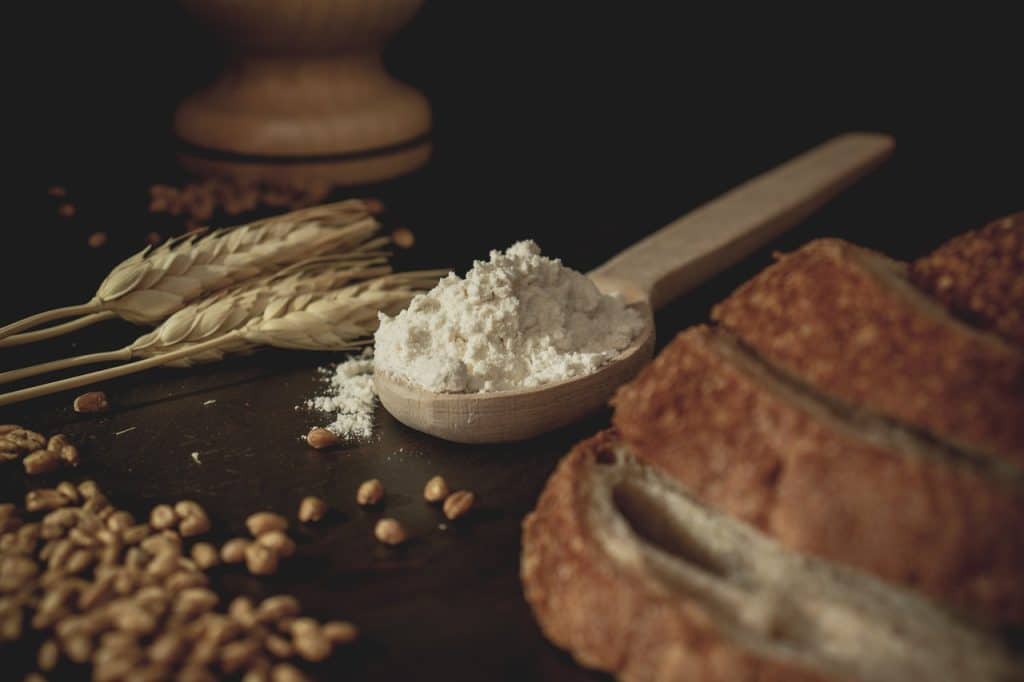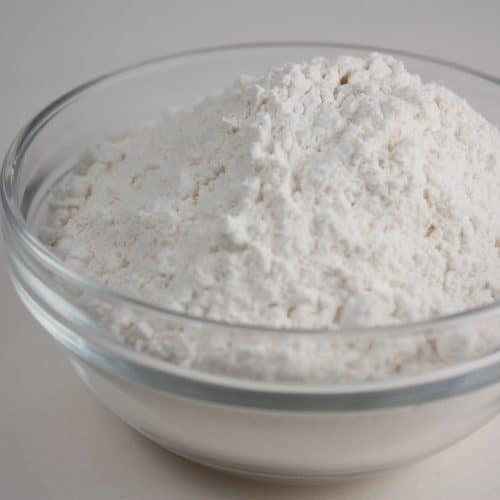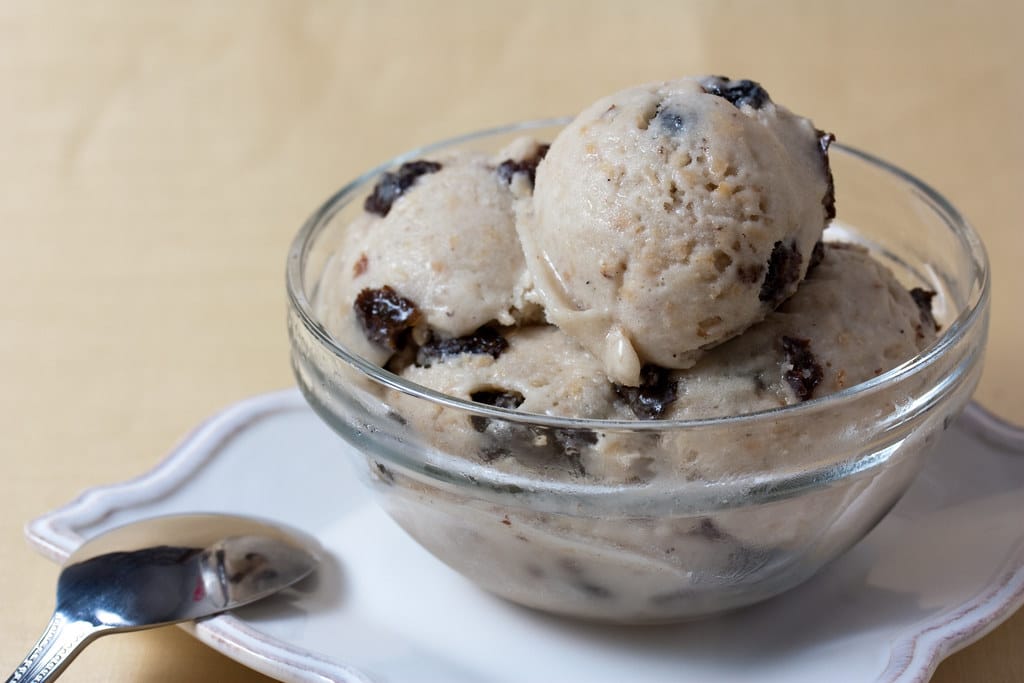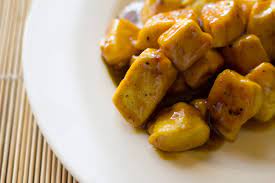Need self-rising flour for a recipe? **No sweat!** Just mix regular flour with some baking powder and you’re set.
This guide will show you how to do it.
Self-rising flour is a type of flour that contains baking powder and salt.
It is commonly used in quick bread, such as biscuits and muffins.

What You’ll Need:
- 1 cup of all-purpose flour
- 1 teaspoon baking powder
- 1/4 teaspoon salt (optional)
All-purpose Flour: Flour is the main ingredient in self-rising flour. You can use any all-purpose flour, such as bleached or unbleached.
Baking Powder: Baking powder is a leavening agent that helps quick bread rise. It is made up of baking soda, cream of tartar, and cornstarch.
Salt: Salt is an optional ingredient in self-rising flour. It helps to control the growth of yeast and bacteria in the flour.
Instructions:
- To make your self-rising flour, combine 1 cup (120 grams) of all-purpose flour, 1 teaspoon baking powder, and ½ teaspoon salt.
- Stir well and store in an airtight container.
- Self-rising flour can be used in any recipe for self-rising or all-purpose flour.
- Remember that the baking powder and salt will already be incorporated, so you may want to reduce the amount of baking powder and salt called for in the recipe.
- If you don’t have self-rising flour and need to make a quick bread, simply combine 1 cup (120 grams) of all-purpose flour, 1 teaspoon baking powder, and ½ teaspoon salt.
- Stir well and proceed with the recipe.
Notes:
Be sure to store self-rising flour in an airtight container.
Baking powder and salt can lose potency over time if exposed to air.
Self-rising flour is not the same as cake flour or bread flour.
Do not substitute self-rising flour for cake flour or bread flour in recipes.
What can I use if I don’t have self-rising flour?
If you don’t have self-rising flour, you can make your own by combining 1 cup (120 grams) of all-purpose flour, 1 teaspoon baking powder, and 1/4 teaspoon salt.
Stir well to combine.
You can use this homemade self-rising flour in any recipe that calls for self-rising flour.
How to store self-rising flour?
To store self-rising flour, first, ensure it is tightly sealed in an airtight container.
If you are not using a commercial brand of self-rising flour, you can store it in the freezer for up to six months.
Otherwise, store self-rising flour in a cool, dry place like your pantry or cupboard.
Self-rising flour can last up to one year if stored properly.
When ready to use self-rising flour, take it out of the airtight container and place it in a bowl.
Use a fork or whisk to break up any clumps that have formed.
If the flour is too dry, add a little water, 1 tablespoon at a time, until it reaches the desired consistency.
Self-rising flour can be used in any recipe that calls for all-purpose flour and baking powder.
What are the main health benefits of self-rising flour?
Self-rising flour is a good source of protein, fiber, vitamins, and minerals.
It also contains phytochemicals, which are plant-based chemicals that have been linked to health benefits like cancer prevention and reduced inflammation.
One of the main benefits of self-rising flour is that it’s a good source of protein.
Protein is an essential nutrient that helps build and repair tissues, produce hormones, and provide structure to cells.
It also helps you stay fuller longer, aiding in weight loss or weight management.
Self-rising flour is also a good source of fiber.
Fiber is a carbohydrate that can’t be digested, so it passes through your digestive system mostly intact.
This makes it beneficial for promoting regularity and preventing constipation.
Fiber is also linked to lower cholesterol levels, improved blood sugar control, and weight loss.
In addition to protein and fiber, self-rising flour is a good source of vitamins and minerals.
These include B vitamins like niacin, thiamin, and riboflavin, as well as iron, magnesium, phosphorus, and zinc.
Self-rising flour also contains phytochemicals, which are plant-based chemicals that have been linked to health benefits like cancer prevention and reduced inflammation.
While self-rising flour has many health benefits, it’s important to remember that it’s still a high-carbohydrate food.
If you’re watching your carb intake, be sure to account for the carbs in self-rising flour when you’re planning your meals and snacks.
Nutritional Information:
1 cup (120 grams) of self-rising flour contains:
- 120 calories
- 1 gram of fat
- 0 grams of saturated fat
- 0 grams of trans fat
- 24 grams of carbohydrates
- 2 grams of fiber
- 4 grams of sugar
- 6 grams of protein
Self-rising flour is a good source of protein, fiber, vitamins, and minerals.
It also contains phytochemicals, which are plant-based chemicals that have been linked to health benefits like cancer prevention and reduced inflammation.
What to serve with this flour?
Self-rising flour can be used in any recipe that calls for all-purpose flour and baking powder.
It can be used to make pancakes, waffles, biscuits, muffins, cakes, cookies, pies, and more.
When self-rising flour is used in baked goods, the resulting product is usually lighter and fluffier than if all-purpose flour were used.
This is because the baking powder in self-rising flour helps to leaven or rise the dough or batter.
If you’re unsure how to use self-rising flour, start substituting it for all-purpose flour in your favorite recipes.
You may need to make a few adjustments, such as adding more liquid or reducing the baking time, but overall self-rising flour can be used in place of all-purpose flour in most recipes.
Self-rising flour can also make a quick and easy pancake or waffle mix.
Just add milk or water, and you’re ready to cook.
Try adding self-rising flour to your favorite pancake or waffle recipe for a tasty twist.
Self-rising flour is a good choice for many recipes, but it’s not the only type available.
If you’re looking for a gluten-free option, try almond flour, coconut flour, or tapioca flour.
Each of these flours has a unique flavor and texture, so experiment until you find the one you like best.
No matter what flour you use, follow the recipe carefully and don’t overmix the batter or dough.
Overmixing can result in strict, dense baked goods.

How To Make Self-Rising Flour
Ingredients
- 1 cup all-purpose flour
- 1 teaspoon baking powder
- 1/4 teaspoon salt
Instructions
- To make your self-rising flour, combine 1 cup (120 grams) of all-purpose flour, 1 teaspoon baking powder, and ½ teaspoon salt.
- Stir well and store in an airtight container.
- Self-rising flour can be used in any recipe for self-rising or all-purpose flour.
- Remember that the baking powder and salt will already be incorporated, so you may want to reduce the amount of baking powder and salt called for in the recipe.
- If you don’t have self-rising flour and need to make a quick bread, simply combine 1 cup (120 grams) of all-purpose flour, 1 teaspoon baking powder, and ½ teaspoon salt.
- Stir well and proceed with the recipe.
Video
Nutrition
- 25 Homemade Sauce For Salmon Recipes - July 27, 2024
- 22 Healthy Chinese Soup Recipes - July 27, 2024
- 25 Best Andouille Sausage Recipes - July 27, 2024



